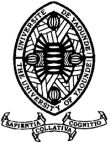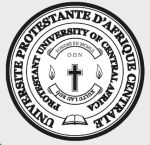Isolated Astrocytic Hamartoma of the Retina and Optic Papilla in Lubumbashi: A Case Report
Hamartome Astrocytaire Isolé de la Rétine et de la Papille Optique à Lubumbashi : A Propos d’un Cas
DOI:
https://doi.org/10.5281/hra.v3i1.6304Keywords:
Astrocytic hamartoma,, retina and papilla, LubumbashiAbstract
RÉSUMÉ
L'astrocytome de la rétine est une tumeur bénigne de l'enfant souvent asymptomatique, qui peut entraîner une baisse d'acuité en cas de localisation maculaire. La découverte fortuite chez un adulte jeune n’est pas à exclure après un examen soigneux du fond d’œil accompagné des autres examens paracliniques. Ils peuvent être uniques ou multiples, unis ou bilatéraux et 50 % d'entre eux sont associés à une phakomatose, la sclérose tubéreuse de Bourneville. Nous rapportons le cas d’un patient masculin de 23 ans se présentant à la consultation au service d’ophtalmologie des cliniques universitaires de Lubumbashi pour une baisse d’acuité visuelle à l’œil droit depuis 2 ans de survenue progressive et non améliorable au trou sténopéique. Le segment antérieur était sans particularité de même le tonus oculaire. L’examen du fond d’œil droit après dilatation pupillaire a révèlé au pôle postérieur une tumeur rétinienne blanchâtre à grand axe horizontal de bord irrégulier, empiétant sur la partie inférotemporale de la papille jusqu’au niveau de la macula plus précisément au niveau de la fovéola rendant la macula terne et dont certains vaisseaux périmaculaires sont hypo perfusés et de direction radiaire. Notre patient a été suivi pendant une année, nous n’avons noté aucune complication et n’avons donné aucun traitement jusqu’à présent.
ABSTRACT
Retinal astrocytoma is a benign tumour in children, often asymptomatic, which can lead to reduced acuity if it is located in the macula. The chance discovery of a tumour in a young adult cannot be ruled out after careful examination of the fundus and other paraclinical tests. They may be single or multiple, single or bilateral, and 50% of them are associated with a phakomatosis, tuberous sclerosis of Bourneville. We report the case of a 23-year-old male patient who presented to the ophthalmology department of the University Clinics of Lubumbashi with a 2-year history of progressive loss of visual acuity in the right eye that could not be improved with a pinhole. The anterior segment was unremarkable, as was ocular tone. Examination of the fundus of the right eye after pupillary dilation revealed a whitish retinal tumour at the posterior pole with a large horizontal axis and an irregular border, encroaching on the inferotemporal part of the papilla as far as the macula, more precisely at the level of the foveola, making the macula dull and with certain perimacular vessels hypoperfused and radiating. Our patient was followed for a year, with no complications noted and no treatment given to date.
References
Zografos L., Uffer S., Bornet Otheningirard C. − Tumeurs neurogliales. In ″Tumeurs intraoculaires″. Rapport Soc Fr Ophtalmol 2002 ; 647-653 In Hajji Z, Charif chefchaouni M, Boularnouar A, Benchrifa F, Berraho A. Hamartome astrocytaire isolé simulant un rétinoblastome. Bull. Soc. Belge Ophtalmol., 287, 19-23, 2003.
L Bihl, M Boissonnot, P (Poitiers) Dighiero. Hamartome astrocytaire de la rétine et sclérose tubéreuse de Bourneville. Journal Français d'Ophtalmologie. Doi : JFO-05-2002-25-5-0181-5512-101019-ART51.
Vikas Ambiya, Baruch D Kuppermann, and Raja Narayanan. Retinal astrocytic hamartoma in a patient with Leber's congenital amaurosis. BMJ Case Rep. 2015; 2015: bcr2014208374. Doi: 10.1136/bcr-2014-208374.
Sugandha Goel, Debmalya Das, Kumar Saurabh, and Rupak Roy. Multimodal imaging in a case of bilateral astrocytic hamartoma with retinitis pigmentosa. GMS Ophthalmol Cases. 2023; 13: Doc01. Doi: 10.3205/oc000209.
S. Tick. Une tumeur rétinienne bénigne : volumineux hamartome astrocytaire isolé. Images en Ophtalmologie. Vol. IX. No 1. Janvier-février 2015.
Ibadulla Mirzayev and Ahmet Kaan Gündüz. Hamartomas of the Retina and Optic Disc. Turk J Ophthalmol. 2022 Dec; 52(6): 421–431. Doi: 10.4274/tjo.galenos.2022.25979.
Bo Yang, Danfeng Li, and Jun Xiao. Spontaneous regression of an isolated retinal astrocytic hamartoma in a newborn: a case report. BMC Ophthalmol. 2023; 23: 395. Doi: 10.1186/s12886-023-03135-5.
Downloads
Published
How to Cite
Issue
Section
License
Copyright (c) 2024 Yogolelo Asani Bienvenu, Mbambu Senge Fanny, Nsenga Mulea Delphin, Enduka Okoto Thomas, Ngoie Kayamb Fernand, Assani Morisho Georges, Kangakolo Bintilumami Michou, Kanku Mbuyi Joseph, Mpia Epombe Florent, Ngoy Kilangalanga Janvier

This work is licensed under a Creative Commons Attribution-NonCommercial-NoDerivatives 4.0 International License.
Authors who publish with this journal agree to the following terms:
- Authors retain copyright and grant the journal right of first publication with the work simultaneously licensed under a Creative Commons Attribution License CC BY-NC-ND 4.0 that allows others to share the work with an acknowledgement of the work's authorship and initial publication in this journal.
- Authors are able to enter into separate, additional contractual arrangements for the non-exclusive distribution of the journal's published version of the work (e.g., post it to an institutional repository or publish it in a book), with an acknowledgement of its initial publication in this journal.
- Authors are permitted and encouraged to post their work online (e.g., in institutional repositories or on their website) prior to and during the submission process, as it can lead to productive exchanges, as well as earlier and greater citation of published work










